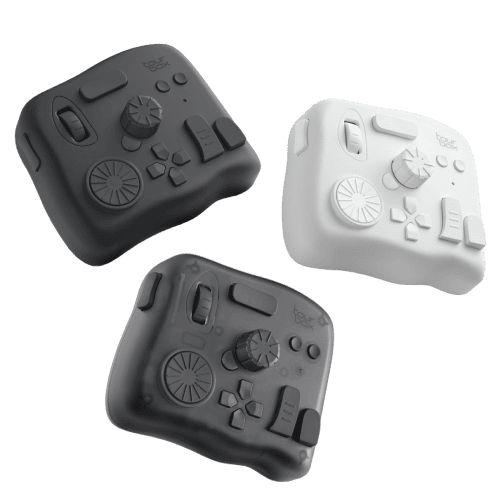What Is a Montage? Understanding the Power of Visual Storytelling
Many movie lovers are likely familiar with the term "montage," and for good reason. A montage is a powerful tool that can evoke a range of emotions from the audience, whether it's tears, laughter, shock, or awe.
It's a cinematic technique that utilizes the manipulation of film time and space to control the emotions of the viewer, making it a key ingredient in the art of filmmaking.
But what exactly is a montage, and how does it work its magic on the audience?
In this article, we'll take a deep dive into the world of montage, exploring its meaning, history, and various types.
So, what is a montage, and why is it such an essential element in the language of cinema? Let's find out.

In this article, you will learn:
- What Is a Montage?
- Montage: The Art of Reconstructing Time and Space
- The Evolution of Montage
- The Classification of Montage
- How to Make a Video Montage?
What Is a Montage?
The word "montage" originally comes from the world of French architecture, where it referred to a combination composition of different materials to create a building.
In the film industry, a montage is a technique of editing where a sequence of shots is combined in order to create a new meaning that would not exist if the shots were viewed independently.
Essentially, a montage is a visual storytelling tool that allows filmmakers to communicate ideas, emotions, and concepts through the effective combination of images, sound, and music.
By carefully selecting and arranging shots, a filmmaker can create a specific mood or atmosphere and convey a message to the audience in a powerful and memorable way.
In other words, a montage is a blueprint for constructing a scene that guides the viewer's perception and understanding of the story being told.
One classic use of montage is in sports movies. Think of the training montage in Rocky, where we see Rocky Balboa going through a series of exercises and training sessions set to music.
By carefully selecting and arranging shots of Rocky's workouts, the filmmakers are able to create a sense of progression, showing Rocky getting stronger and more skilled as he prepares for the big fight.
Another example of montage can be found in The Godfather. In the baptism montage, we see a series of shots intercut between the baptism ceremony and the violent murders of several of Michael Corleone's enemies.
By juxtaposing the serene, religious setting of the baptism with the brutal violence occurring elsewhere, the filmmaker creates a powerful contrast that highlights the darkness and corruption at the heart of the story.
In summary, montage is a powerful tool that filmmakers use to create meaning and emotion through the careful selection and arrangement of shots.
By combining visuals, sound, and music, filmmakers can guide the viewer's perception and understanding of the story being told, creating a lasting impact on the audience.
Check out the following YouTube video (made by NLT MoviePod) about the montage:
Montage: The Art of Reconstructing Time and Space
In the world of film, few techniques are as impactful and versatile as a montage. With its ability to manipulate time and space, montage is a powerful tool that allows filmmakers to create meaning, convey emotion, and tell compelling stories.
At its core, montage is a technique of editing where a sequence of shots is combined to create a new meaning that would not exist if the shots were viewed independently.
At the heart of the technique lies its ability to reconstruct time and space. By carefully selecting and arranging shots, filmmakers can compress time, expand it, or even manipulate it in ways that would be impossible in real life.
Montage allows filmmakers to create a sense of progression, showing characters developing and changing over time, or juxtaposing seemingly unrelated events to create new meaning.
In terms of time, montage can condense lengthy events or extend moments to create the desired emotional impact. For example, in the film "Up," the life of a pair of lovers is condensed into a tear-jerking clip lasting only a few minutes.
Conversely, "2001: A Space Odyssey" by Stanley Kubrick uses just two shots to depict the evolution of humankind over thousands of years. Montage can also extend time, as seen in bomb-disposal scenes, where several minutes create a sense of tension.
In terms of space, montage can seamlessly combine shots from different locations or perspectives to create the illusion of a continuous narrative.
For instance, the famous chase sequence in Alfred Hitchcock's "North by Northwest" presents the protagonist being chased across various landscapes. The montage allows the audience to experience the progression of the chase without any disruption, adding to the film's suspense.
The Evolution of Montage
Montage has a rich and fascinating history that spans over a century of filmmaking.
From its early beginnings in the silent film era to its modern-day use in blockbusters and independent films alike, montage has been an essential tool for filmmakers seeking to tell compelling stories and evoke powerful emotions.
Here are a few key figures and historical moments in the evolution of the montage:
- In the films of the Lumière brothers, we often see static single shots and documentary-style images without any montage.
- Georges Méliès, in 1896, accidentally discovered the potential of montage when a camera malfunction caused a carriage to transform into a hearse. This event broke the one-shot rule in cinema, and films began to possess the characteristics of decomposition and combination.
- Edwin S. Porter, in "Life of an American Fireman" (1903), revolutionized editing by combining shots from different time zones, depicting firemen fighting fires on one side and people waiting to be rescued on the other.
- David Griffith truly liberated cinema from the constraints of dramatic aesthetics. In "Intolerance: Love's Struggle Throughout the Ages," he alternates between four stories from different eras and places, eventually converging on a common theme. Griffith also created the "last-minute rescue" narrative, which uses montages to heighten tension and focus on the story's climax.
- Soviet Montage School emphasized the collision of images to create new meanings, rather than relying solely on narrative-based montage. In the classic film "Battleship Potemkin," the Odessa Steps sequence is a prime example of this approach.
The Classification of Montage
There are varying opinions on the classification of montage, and no single definitive statement exists. However, based on its expression form, montage can be broadly categorized into the following three types:
- Narrative montage: This type of montage focuses on telling a story by combining shots that follow a logical, chronological sequence. For example, a car chase scene in an action movie might use a narrative montage to maintain continuity and coherence.
- Intellectual montage: This type of montage relies on the juxtaposition of seemingly unrelated images to create new meanings and provoke thought. Sergei Eisenstein's "Battleship Potemkin," with its Odessa Steps sequence, is an excellent example of an intellectual montage.
- Expressive montage: This type of montage uses visual elements to evoke specific emotions or moods. For instance, a horror movie might use expressive montage by combining eerie shots and lighting to create a sense of fear or dread.
How to Make a Video Montage?
After gaining a basic understanding of what a montage is, you may be eager to shoot your own montage footage. However, the process of shooting a montage is not always straightforward and there is no clear-cut method to follow.
In order to create a great montage clip that effectively conveys your ideas and desired message to your audience, you will need to utilize various techniques such as camera language, editing, sound, and image contrast during production or post-production.
It's important to remember that the montage actually begins the moment you start filming, as the footage you capture will be the foundation of your final product.
By carefully planning your shots and considering the pacing, mood, and overall message you want to convey, you can create a strong visual story that engages your audience and effectively communicates your ideas.
As mentioned earlier, post-editing is also a crucial aspect of creating a successful montage clip.
However, using video editing software like Adobe Premiere Pro or DaVinci Resolve can sometimes be frustrating due to the frequent zooming and scrolling operations required. This is where TourBox comes in as a solution to these problems.

TourBox is a compact and customizable controller that can be used with a variety of video editing software to streamline your editing process.
With TourBox, you can easily adjust settings, navigate timelines, and perform other editing tasks without having to constantly zoom and scroll. This can make your editing process more efficient and allow you to focus on creating the best possible video montage.